Abstract
Water collected at 12 sites in the Neuse River estuary of North Carolina was analyzed for total viable counts on three isolation media (Trypticase soy agar [TSA], marine agar 2216, Sabouraud agar) and total hydrocarbons by fluorescence spectroscopy. Counts of 3.9 X 10(1) to 3.8 X 10(3) cells/ml were found for total heterotrophs, well within the range commonly reported for marine and estuarine waters. Generally, marine agar 2216 gave higher counts than TSA at stations with salinities greater than 6.0 mg/ml; TSA gave higher counts than marine agar 2216 at sites with salinities less than 4.0 mg/ml. The microbial species isolated on the three media agree well with those previously reported for estuarine microbial communities. Water analyses, using XAD-2 resin and fluorescence spectroscopy, revealed petroleum hydrocarbon concentrations in the range of 5 to 79 ng/ml. Representatives of the microbial species isolated from these communities were tested individually for their ability to grow using kerosene as a sole source of carbon and energy. At all but two stations, the majority of the species isolated were able to grow on hydrocarbons, indicating that this ability is widespread even in environments not subjected to high levels of hydrocarbon pollution.
Full text
PDF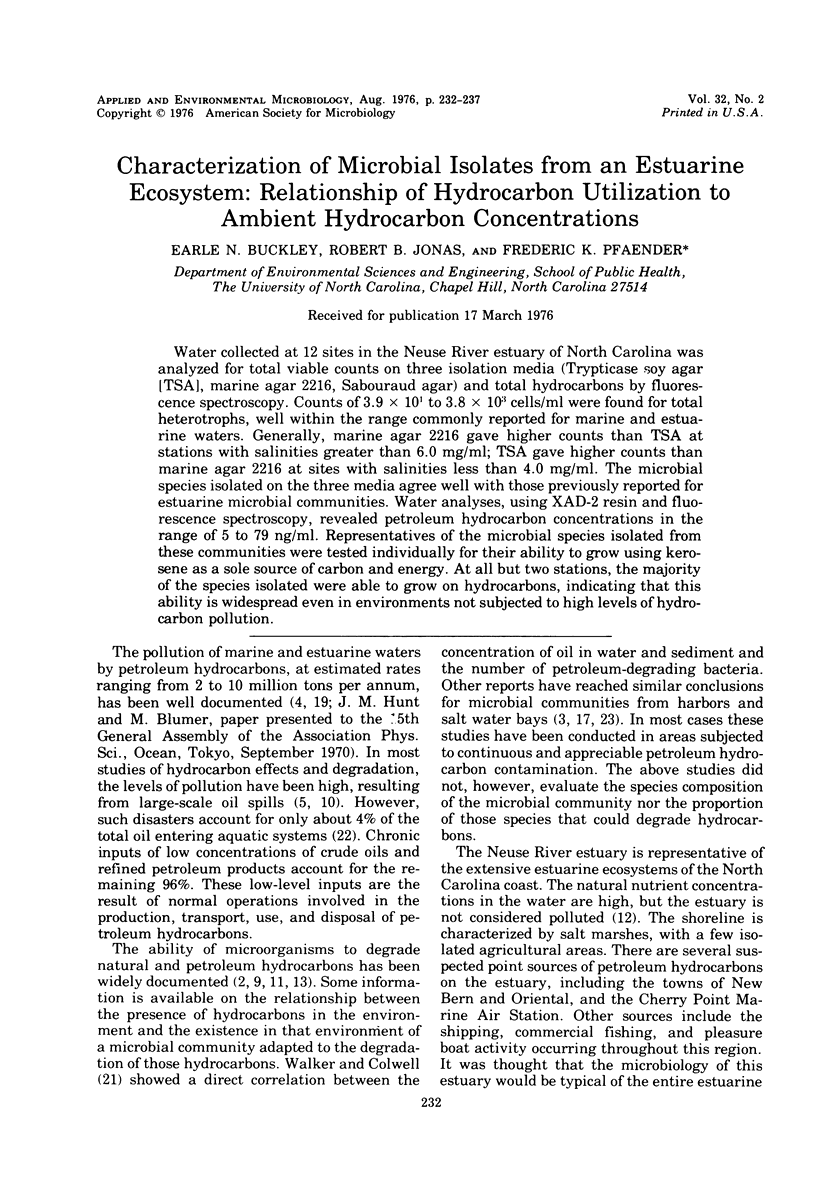
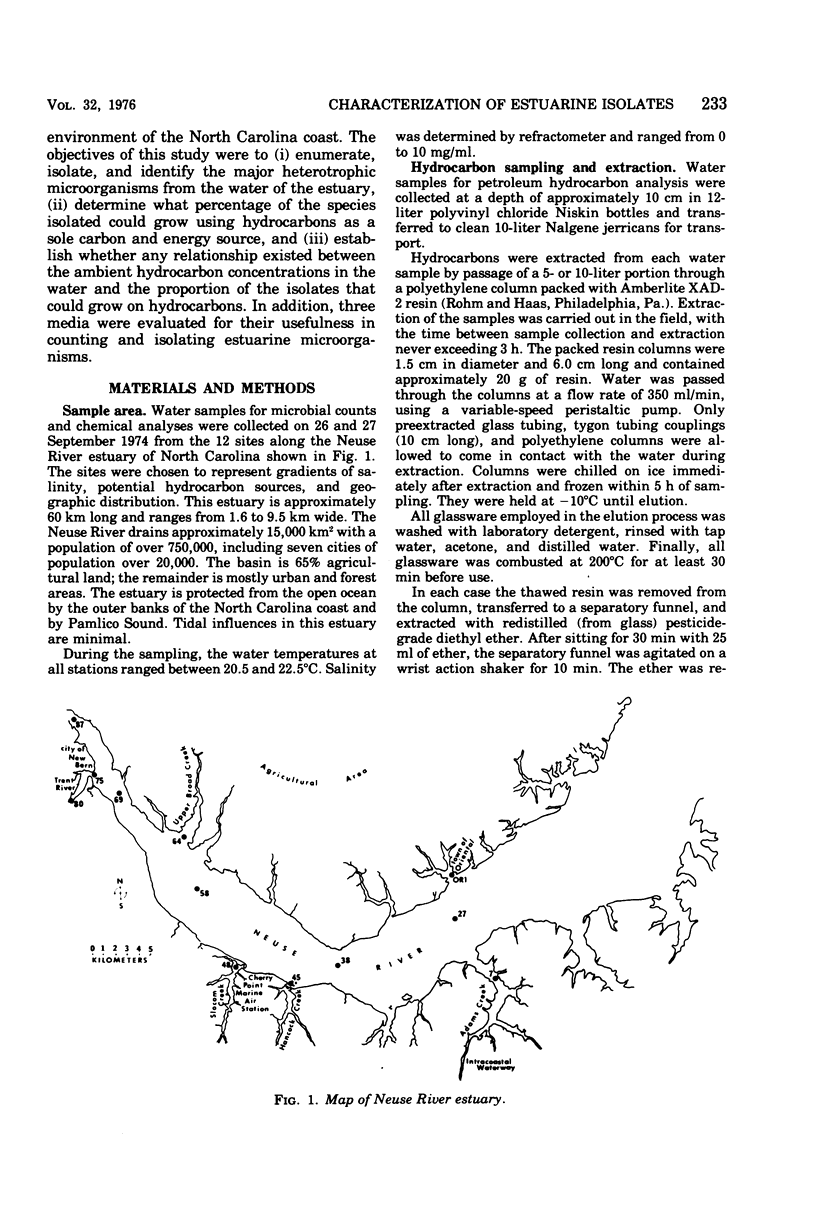
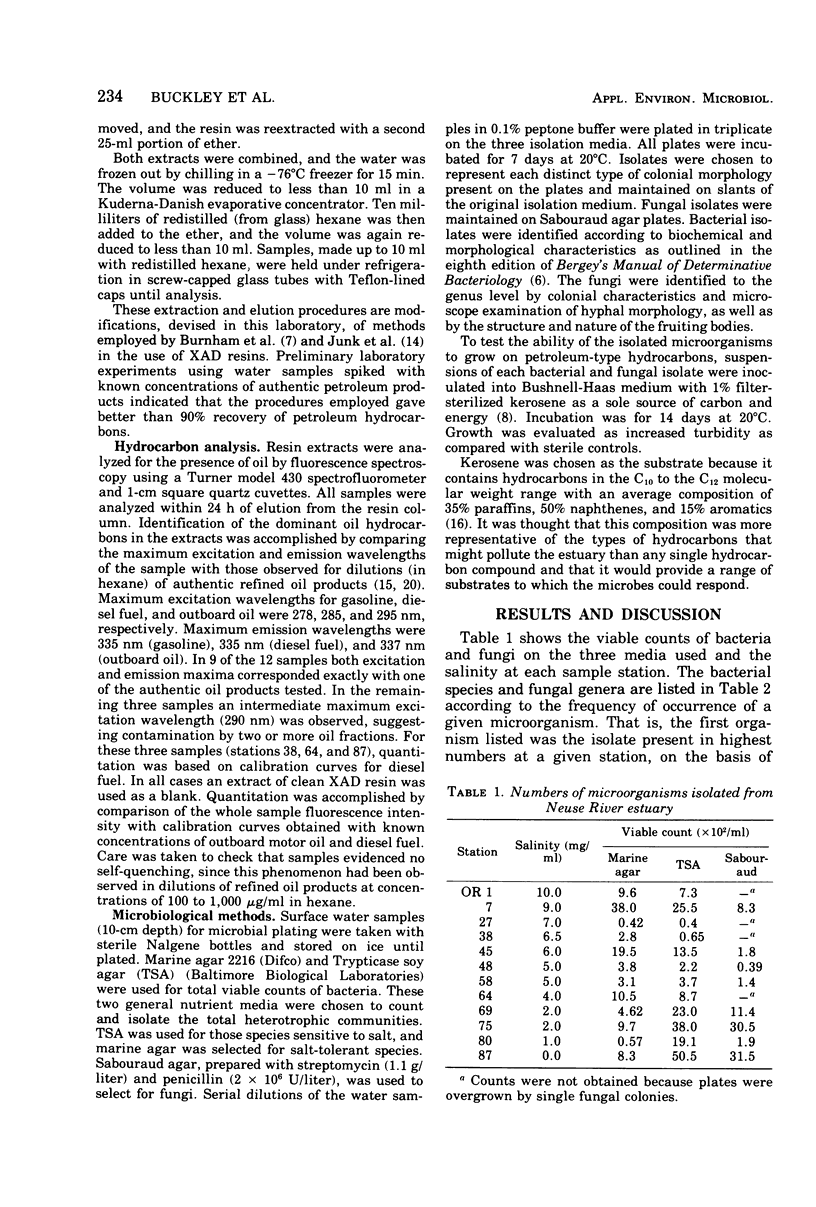
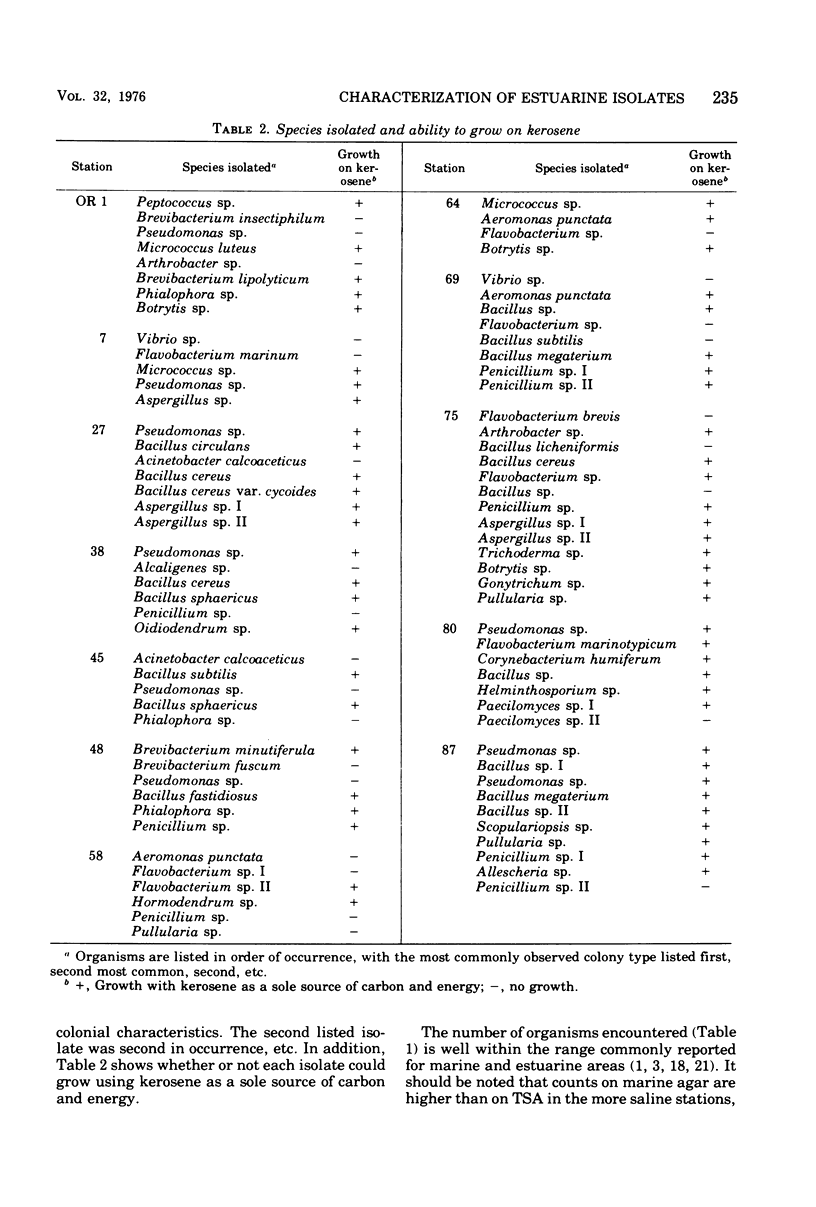
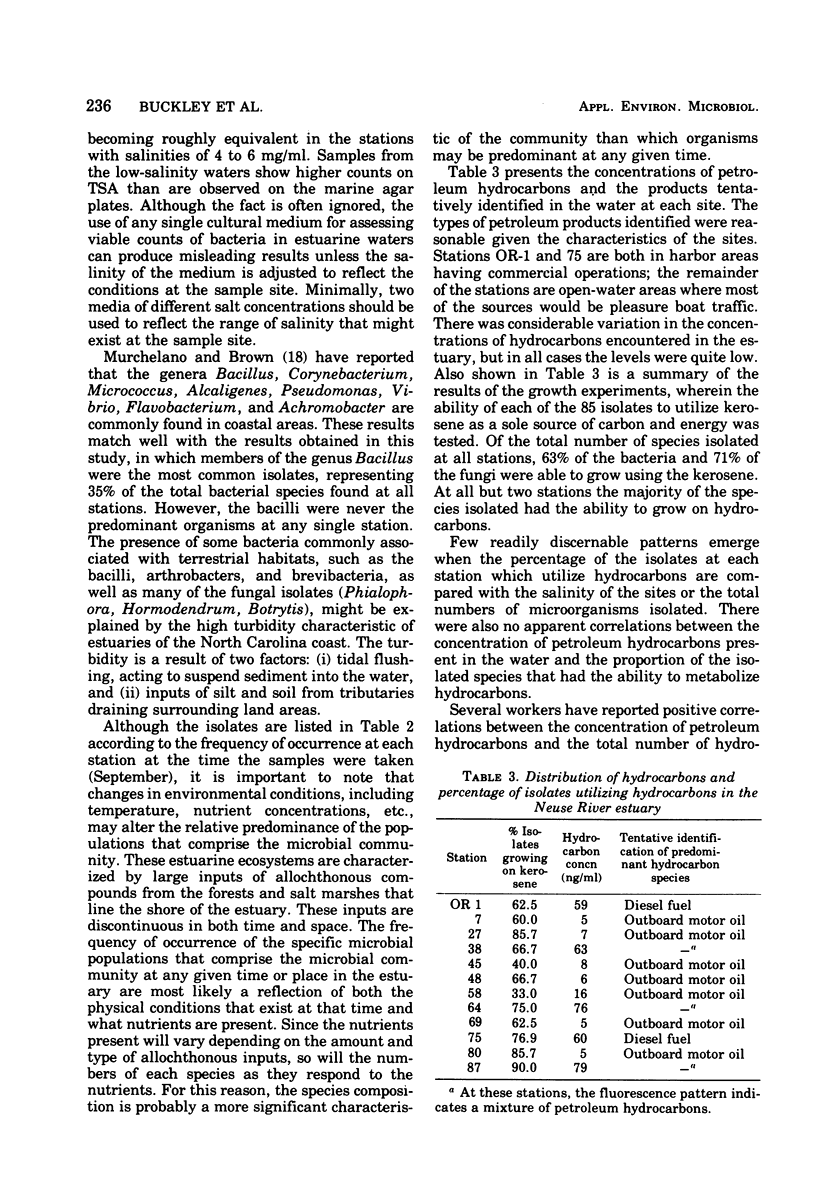
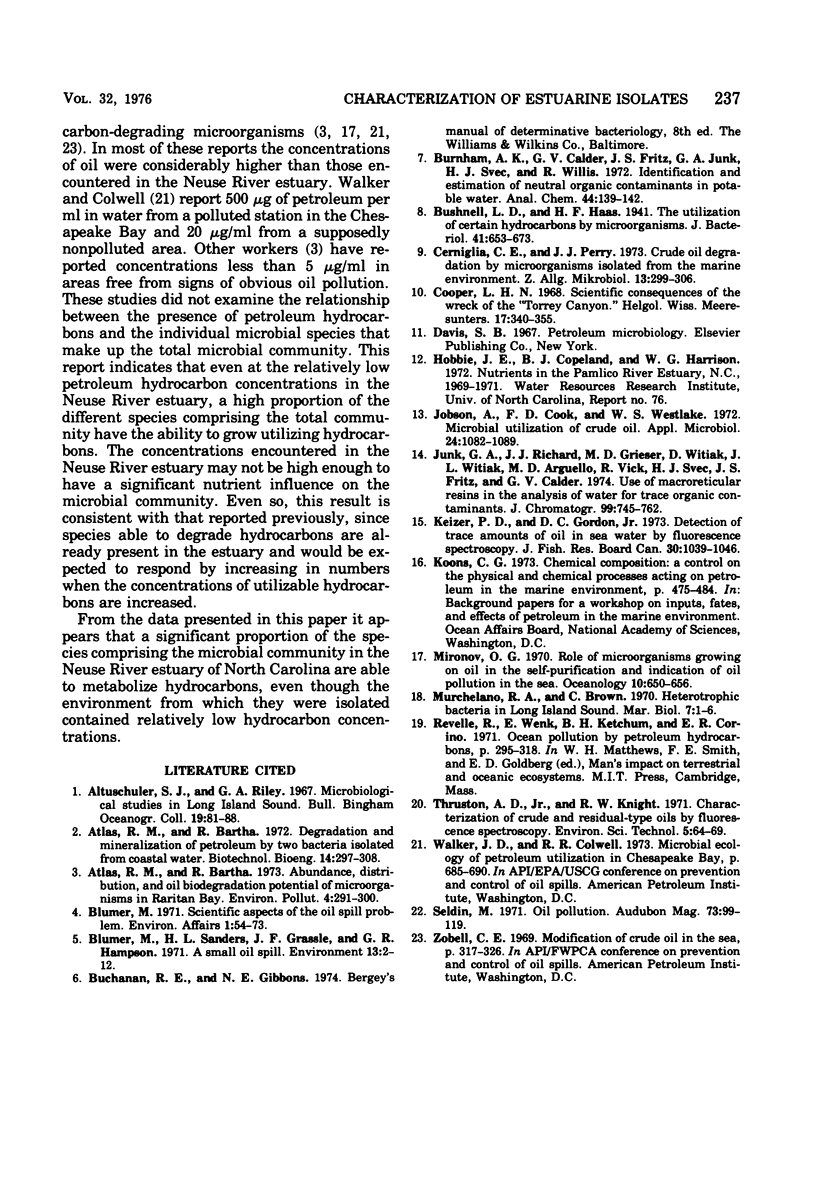
Selected References
These references are in PubMed. This may not be the complete list of references from this article.
- Atlas R. M., Bartha R. Degradation and mineralization of petroleum by two bacteria isolated from coastal waters. Biotechnol Bioeng. 1972 May;14(3):297–308. doi: 10.1002/bit.260140303. [DOI] [PubMed] [Google Scholar]
- Burnham A. K., Calder G. V., Fritz J. S., Junk G. A., Svec H. J., Willis R. Identification and estimation of neutral organic contaminants in potable water. Anal Chem. 1972 Jan;44(1):139–142. doi: 10.1021/ac60309a005. [DOI] [PubMed] [Google Scholar]
- Bushnell L. D., Haas H. F. The Utilization of Certain Hydrocarbons by Microorganisms. J Bacteriol. 1941 May;41(5):653–673. doi: 10.1128/jb.41.5.653-673.1941. [DOI] [PMC free article] [PubMed] [Google Scholar]
- Cerniglia C. E., Perry J. J. Crude oil degradation by microorganisms isolated from the marine environment. Z Allg Mikrobiol. 1973;13(4):299–306. doi: 10.1002/jobm.3630130403. [DOI] [PubMed] [Google Scholar]
- Jobson A., Cook F. D., Westlake D. W. Microbial utilization of crude oil. Appl Microbiol. 1972 Jun;23(6):1082–1089. doi: 10.1128/am.23.6.1082-1089.1972. [DOI] [PMC free article] [PubMed] [Google Scholar]
- Junk G. A., Richard J. J., Grieser M. D., Witiak D., Witiak J. L., Arguello M. D., Vick R., Svec H. J., Fritz J. S., Calder G. V. Use of macroreticular resins in the analysis of water for trace organic contaminants. J Chromatogr. 1974 Nov 6;99(0):745–762. doi: 10.1016/s0021-9673(00)90900-2. [DOI] [PubMed] [Google Scholar]
- Williams T. W., Jr, Sailer J. E., Viroslav J., Knight V., Glasgow N., Moreland N. Serratia marcescens as a postoperative pathogen. Am J Surg. 1971 Jul;122(1):64–69. doi: 10.1016/0002-9610(71)90350-3. [DOI] [PubMed] [Google Scholar]


